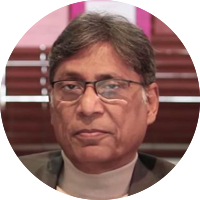Modernism in Urdu Ghazal (Jadeediyat in Urdu Ghazal)
The Modern Ghazal
The mid-twentieth century saw the emergence of what may be called the modern Urdu ghazal. While some of the poets drew upon the traditions of the past to develop their own models of the decisively modern ghazal, others moved in different directions to project their drastic or even desperate versions of the modern. This resulted in the emergence of a large variety of thematic and stylistic variations. Exposed to broader contemporary realities, the modern ghazal poets wrote of existential angst. They turned the eerie into concrete and the concrete into eerie as also the mundane into sublime and the sublime into mundane. These new poets lived in a shrinking world, as well as in different diasporas and discovered themselves amidst doubts and despairs of belonging and non-belonging. They experimented with language, resorted to intermixing of various linguistic codes and turned playful with it to evolve a secular parlance.
The modern ghazal poets aimed at evolving an intriguingly individual diction. They transformed their words into moods and moments, as well as auditory and visual entities. In moulding the contemporary speech as gendered, communal, political, or even prosaic, they manoeuvred their compositions in different styles. They also made experiments with the inner weather of the ghazal and imparted a new resonance and echo to their compositions. In additions, they also brought other literary forms to obliquely bear upon their ghazal. In doing so, these poets created visual and auditory images in comparison with the ghazals of the past. They grew avant garde and surreal, allusive and ambiguous, downright playful and humorous, while they also turned mythopoeic in their perceptions of time and space. In concretising their experience through verbal iconography, they wished to belong to a larger community of poets and artists who broke physical boundaries and sought their identity in difference.
The new ghazal poets found their ways of assent and dissent in the way they internalised the conditions around them. They did so in the spirit of curiosity, interrogation, escape, and affirmation. Some of the major modern ghazal poets include Majeed Amjad, Nasir Kazmi, Khalilur Rahman Azmi, Hasan Naim, Mohammad Alvi, Munir Niazi, Zeb Ghauri, Jaun Eliya, Ahmad Faraz, Bani, Zafar Iqbal, Ahmad Mushtaq, Shakeb Jalali, Adil Mansoori, Shahryar, Nida Fazli, Irfan Siddiqui, Kishwae Naheed and Iftekhar Arif, among many others.
The Contemporary ghazal
The Urdu ghazal since the 1980s has shown remarkable variations on the modernist ghazal that took off during the 1950s. It has grown out of the modernist need to establish itself as yet another exemplar of literary expression. Transcending the limits of the modernist ghazal, the contemporary ghazal has acquired certain stability and speaks in a much more sober and serious tones of voice. It has kept growing both in India and Pakistan with greater resilience than before. This newest of the new ghazal has shown infinite passion for life and art. It is perennially positive, as against the pensive and the ponderous ghazal of the past. Instead of engaging with the problem of identifying themselves as modern or postmodern, today’s ghazal poets have grown more impersonal and calmer than the their predecessors. They have chosen to engage with the philosophical and the mystical aspects of existence and have engaged with the histories of heritage and belonging in broader ways. As monologists and dialogists, they address the readers as their compatriots and co-readers.
The contemporary ghazal poets inhabit a larger world. They have chosen to defy polarities and they speak in the language of common aspirations to construct a literary culture of greater homogeneity and strength. They represent their new habitats of belonging; they create a new skyline of their own which is under constant change of colours. The contemporary ghazal poets have brought their ghazal to a point of serenity from where its future course might be imagined. These may be imagined, or configured, in terms of the possible-impossible turns of future history, and impossible-possible ways of human imagination. They aspire to discover a fresh apprehension of reality and a new language to construct that reality. The contemporary ghazal poet historicises, politicises, and mythicises the consequential points of contemporary history. It qualifies socio-political cultures on their merits and demerits, interrogates the dichotomies of modern-day life and living in terms of power-play and broader antinomies in local and global contexts.
The contemporary ghazal chronicles the illusive notions of progress that underline the dynamics of society, economy, and polity in the community of competitive nation-states of our times. Some of the poets who represent this trend include Sarwat Hussain, Farhat Ehsas, Ashufta Changezi, Jamal Ehsani, Perween Shakir, Ishrat Afreen, Asad Badayuni, Khursheed Akbar, Zeeshan Sahil, and Aftab Hussain, among several others.

